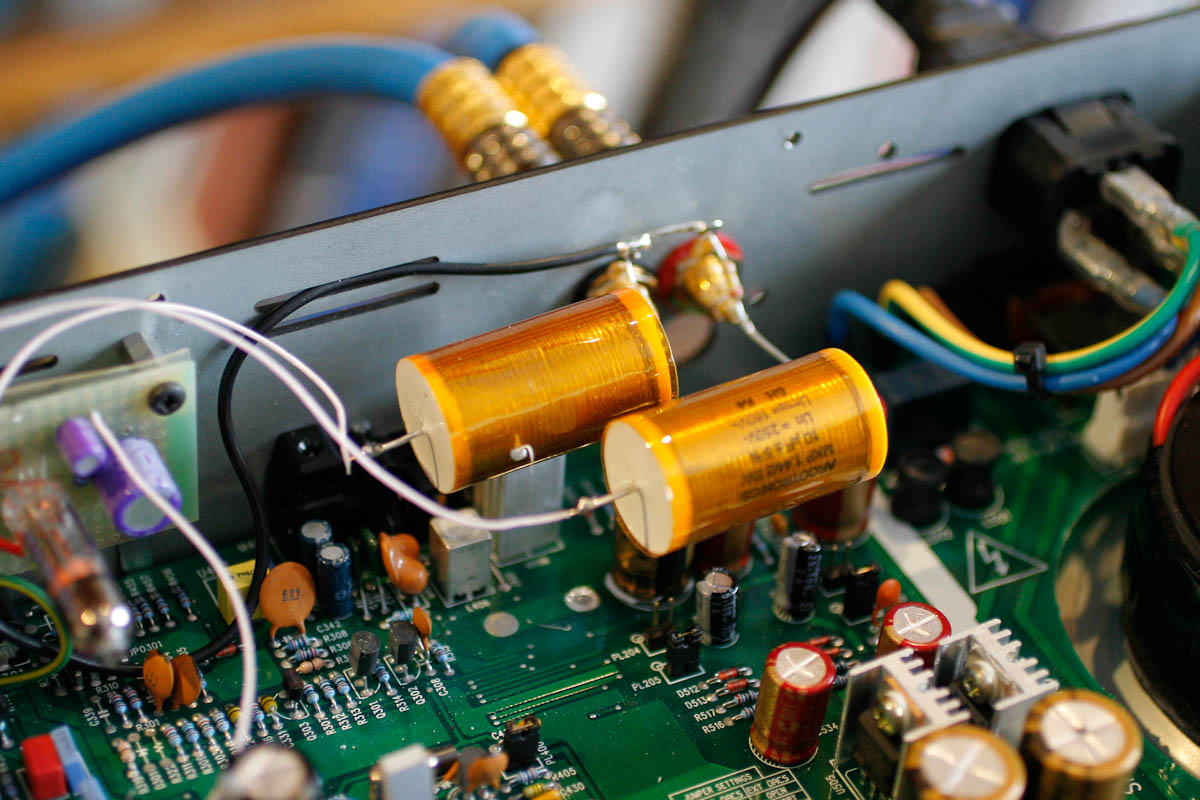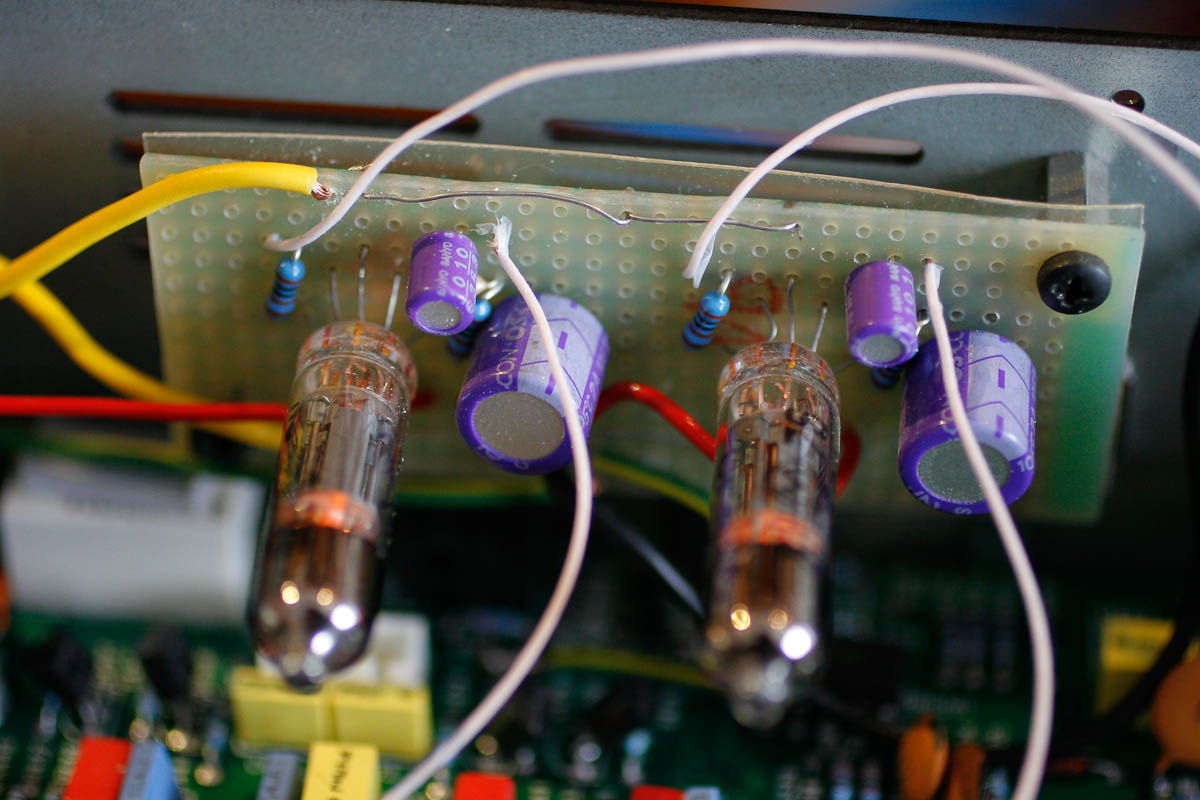The world's first Mikrolampizator
Presented by Lukasz Fikus on January 17, 2010.
Possibly, it is also the first new Lampizator design of year 2010
world-wide !
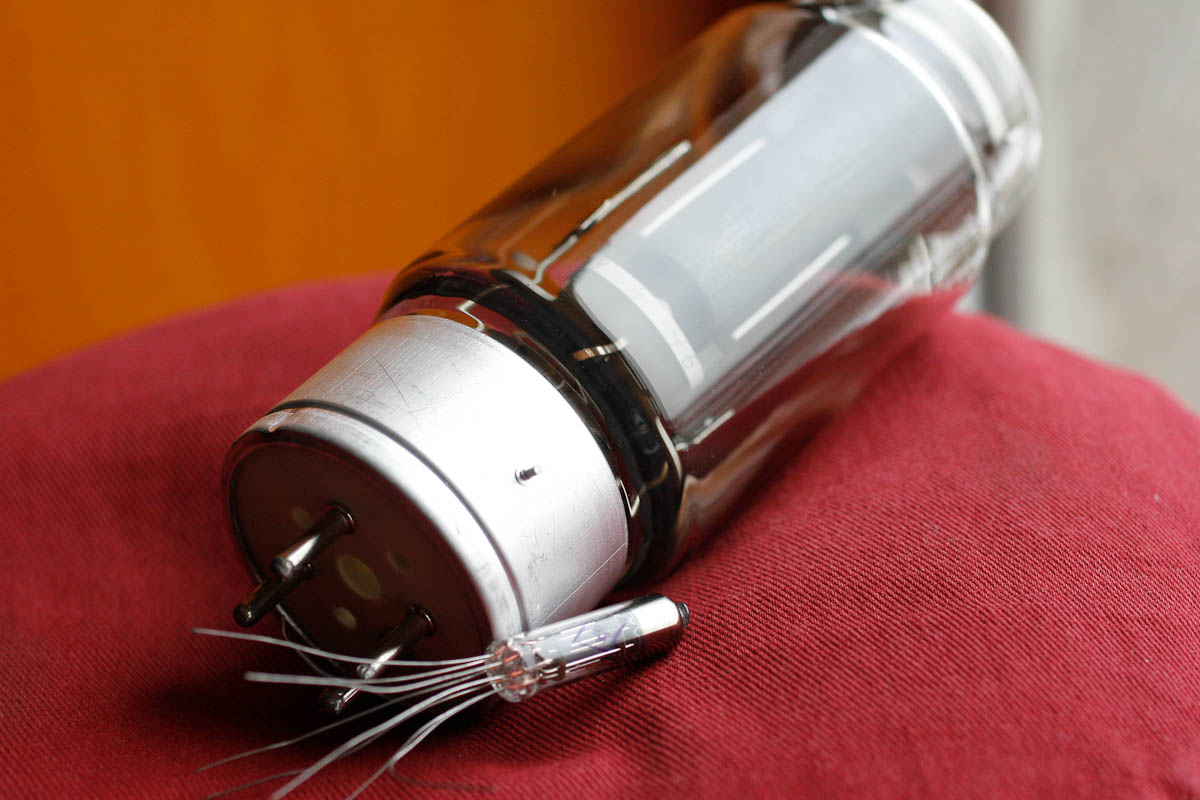
A subminiature next to my GM70 triode.
Does size matter? (aren't you sick of that joke ? Because I am.
I am gonna
vomit.)
When I saw the present my wife got - as a Wife Of Lampizator - she got
from someone earrings made of miniature tubes.
HOW CUTE thought I, I wonder what tubes these are?
Are these toys ?
James Bond tubes?
Are they baby- tubes, like baby carrots, baby corn, or baby tomatoes ?
Are they perhaps BONSAI tubes ?
In fact - these are 6H16 (in Latin 6N16). made in Soviet Union as
direct replacement of our
big normal tubes.
Curiosity bug kept biting ? How do they play? Easy to get ? Easy to
mount ? Why noone uses them ?
In fact - Vincent uses them in their top preamp, so these tubes can't
be that
bad.
Audionote (Kondo) uses something similar - also subminiatures - in
their top pre (is it M7 or M10 ?).
There are many raytheons out there too.
Anyway - as you can imagine - I HAD TO HAVE THEM.
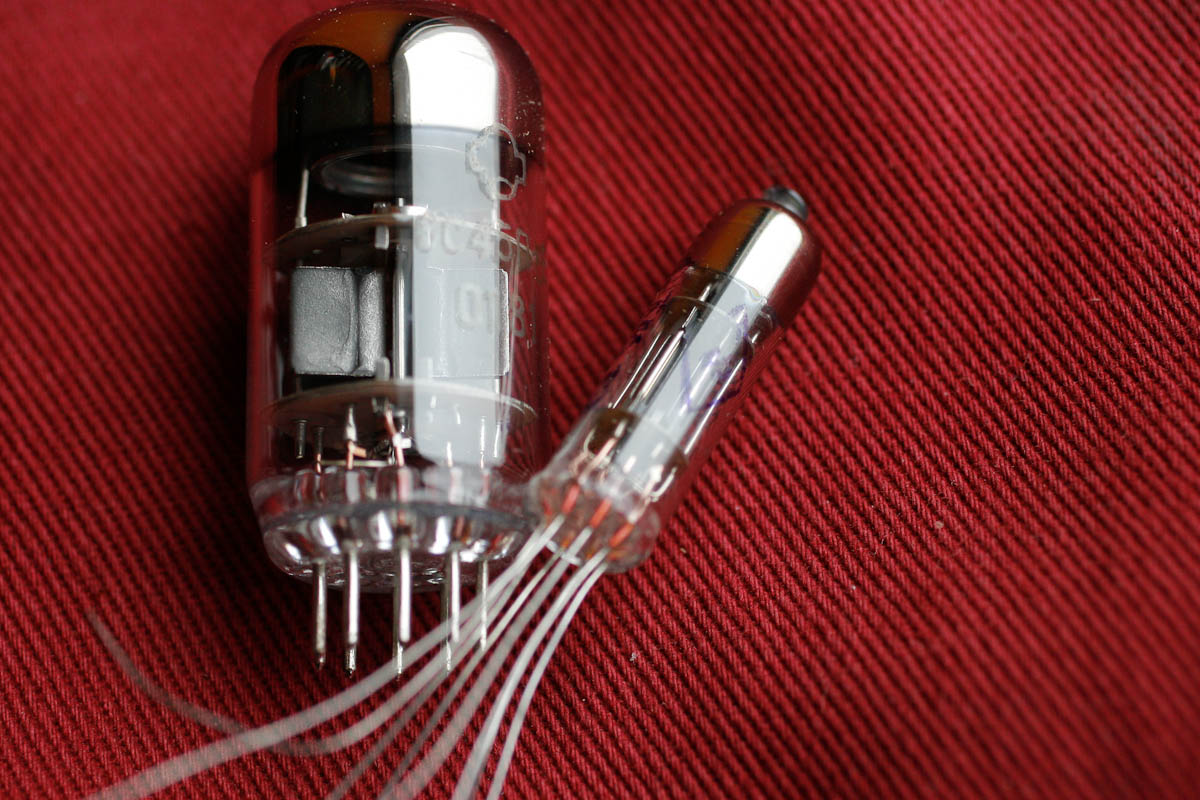
Above - a subminiature next to normal noval tube (6H45P)
After some searching I found out that they are NOT easy to buy, and not
too cheap, the more excited I was. I was trembling with desire.
(If that small tube is not a phallic symbol (like 845 or GM70) - then
what organ is it ? Use your imagination. )

Anyhow - after some 2 evenings of testing - a world's first
MikroLampizator was born.
I used it in my Behringer Ultracurve DAC and I mounted it on a test
PCB.
The birth of a Mikrolampizator
I chose a one tube scenario - anode follower. Triode SE mode with just
anode resistor, cathode resistor and bypass capacitor Ck, input cap C1
and output cap C2.
My experimental preliminary values are:
Ra = 30k / 1W (20k: 40k, power from 1/2W to 2 W)
k = 820 Ohms / 1/4 W (from 300 to 1K, power from 1/4 W to 2 W)
Ck = oscon 100 uF / 10 V (from 47 uF till 470 uF, voltage from 6,3 V to
400 V)
C1 = MKP 0,68uF/63V (from 220 nF to 2 uF, voltage from 6V to 600 V)
C2= 1,4 uF / 250 V MKP (from 0,47 uF to 100 uF, voltage from 200 V to
600V)
Power supply:
1A bridge, (between 0,5A to 8 A) 47uF/250V, (from 33 uF to 1000
uF) , -> 10 K resistor (1/2W) (from 2K to 12 K) -> 47uF/250
cap. (tolerance as the other one) One 0,68 uF
MKP bypass on that one. (from 10 nF to 1 uF, voltage from 200 V till
600 V)
Common supply for both channels.
My current is roughly 3-4 mA per triode, well below 10 mA per stereo
system.
Heating current is super small at 0,2 A / 6,3V AC. This can easily be
regulated without even a radiator !
I observed no humming from AC .
The whole lampizator fits on a PCB of a size of credit card. It has the
whole power supply built in.
It is AMAZING.
It's cute
Its small
Just Look:
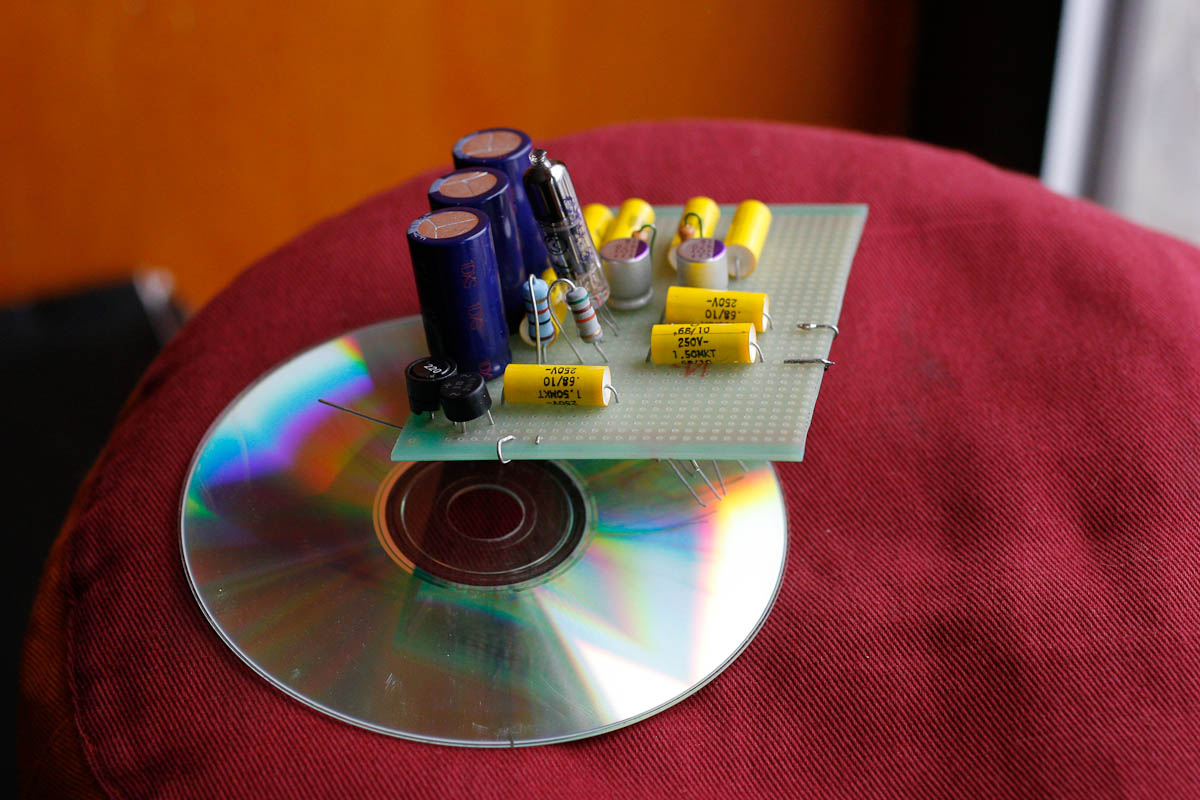
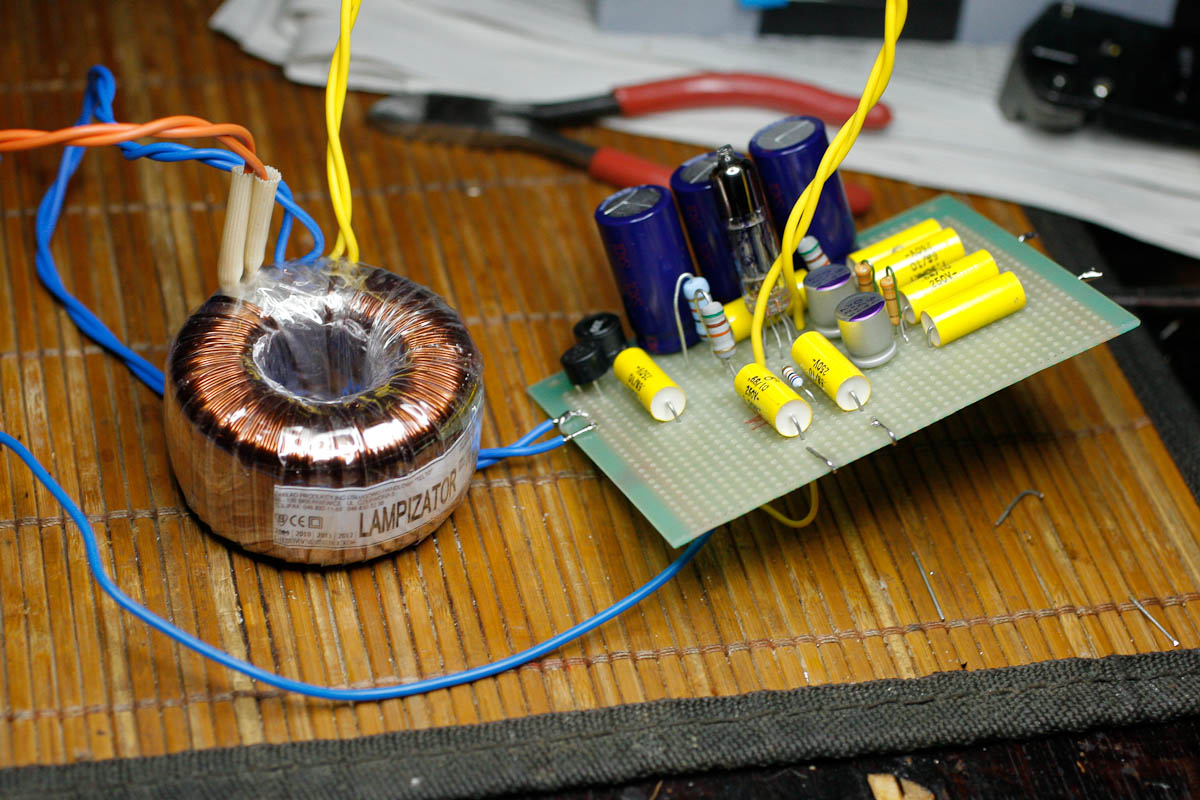
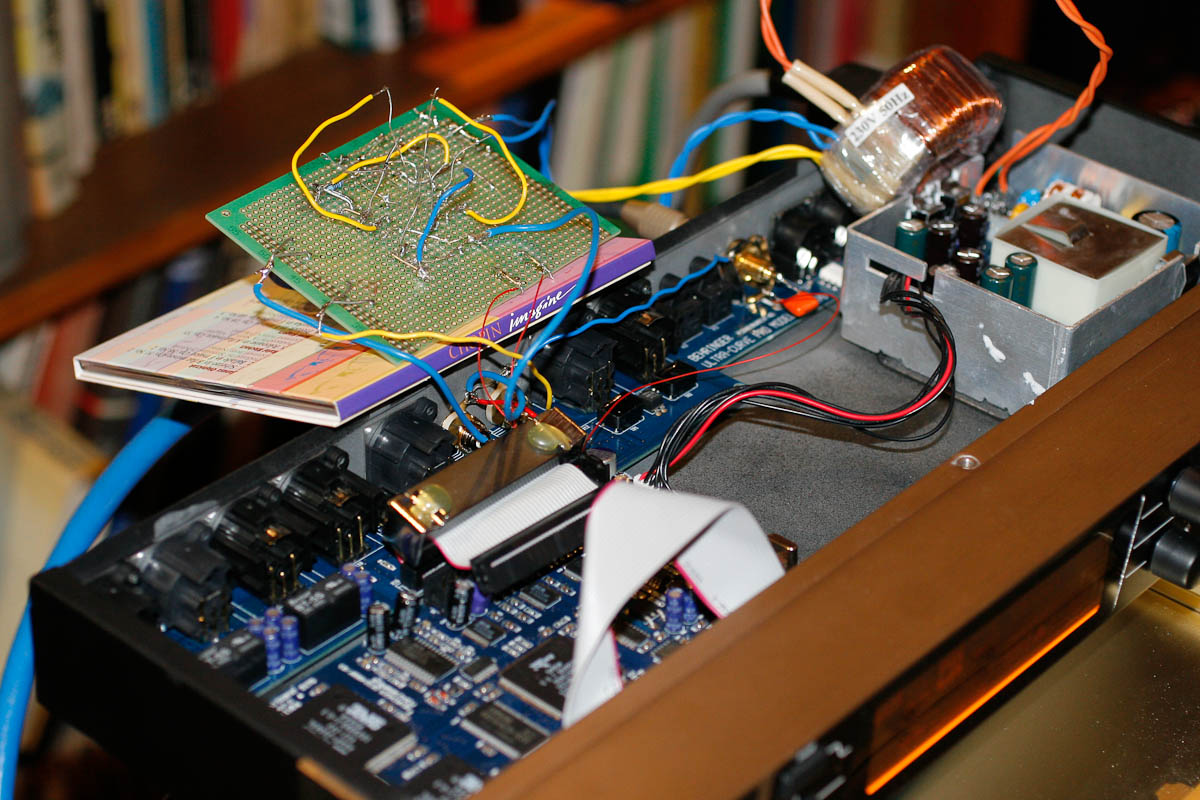
Above - the Mikrolampizator trying to fit inside the Behringer
Ultracurve (unsuccessfully) and trying to sing (very successfully).
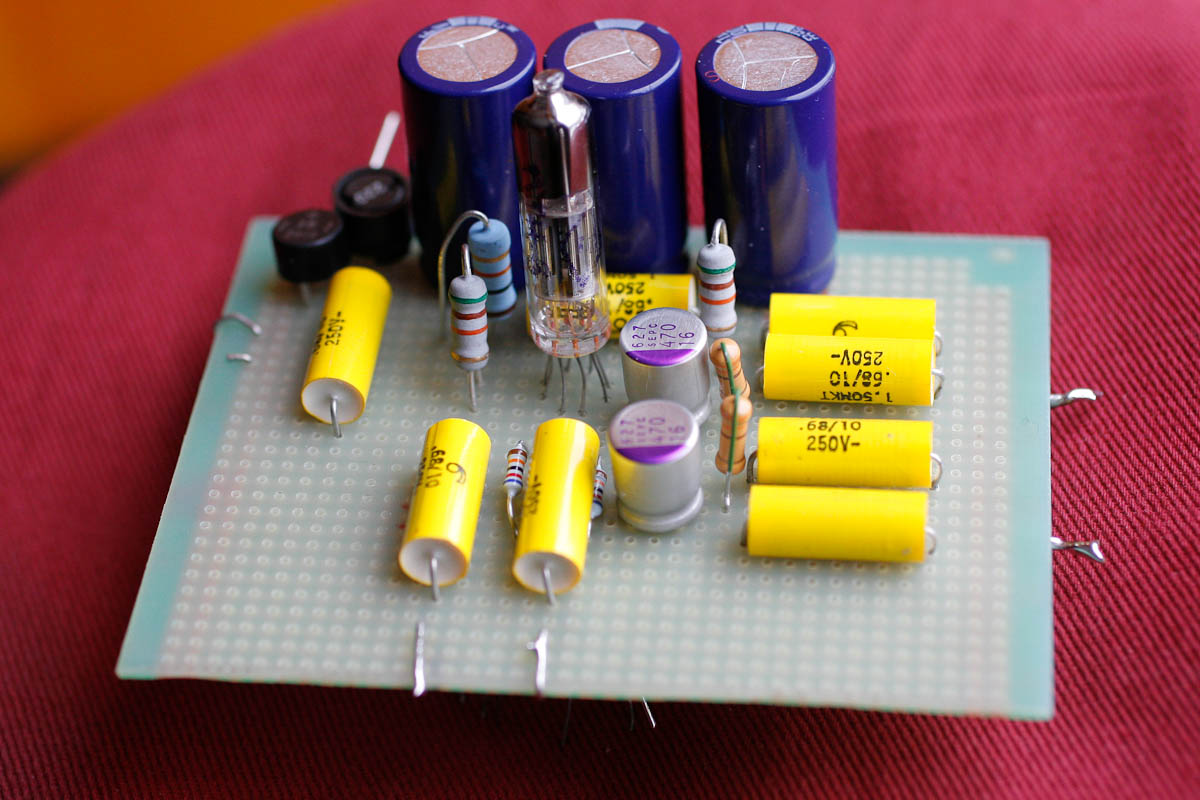
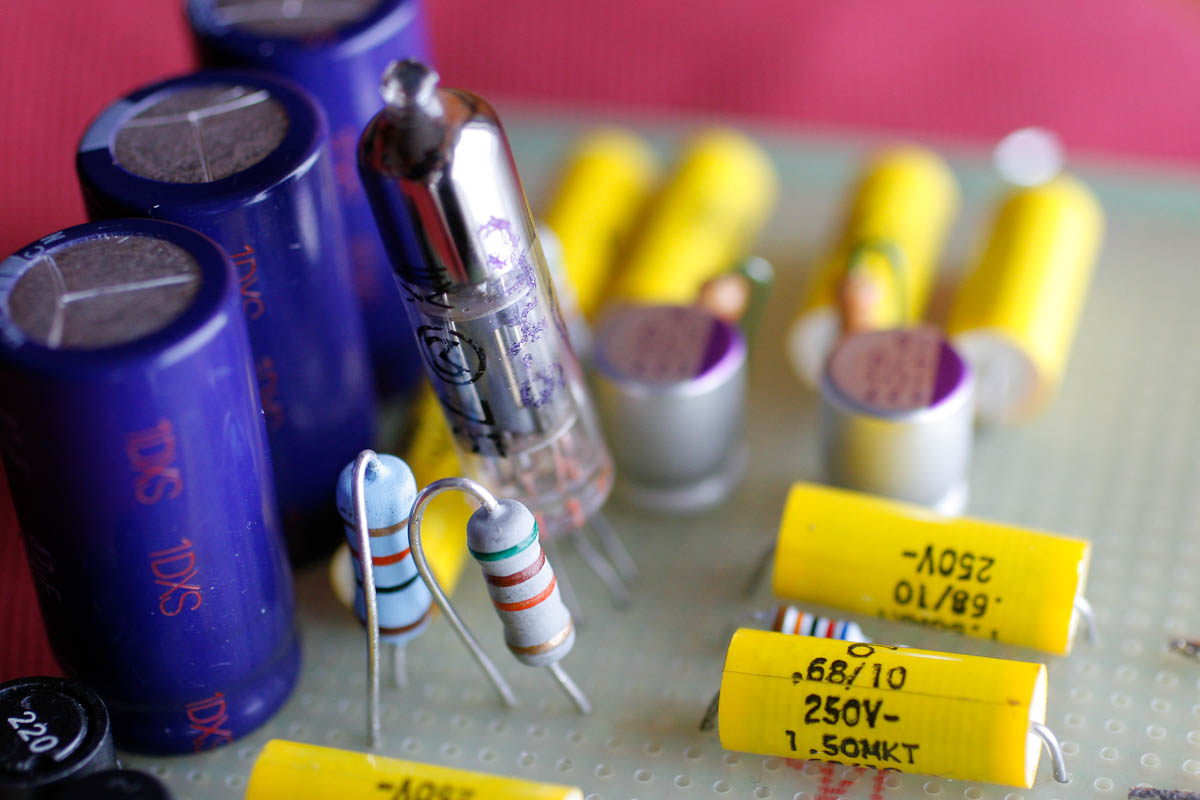
But how does it sound?
Is it just a fun project?
Is it a toy?
Or is it good for such small tube in
relative terms?
Well, my verdict is: very good period. No need to give it
any head start because it is small.
It sounds just as good as the best noval tubes.
Plus
It has some of its own character. It sounds warm, natural, open and
very non mechanical. It sounds so I like it a lot. I feel very good
about this tube.
I am planning to optimize this circuit and use it for Squeezebox
lampization, for all Behringer types, etc.
Goodbye tube rolling - we leave that to incurable tube rollers. They
have no life. Their fingers are constantly itching - tube rolling all
day, until
the sockets fall apart.
We can solder the subminiatures and forget the issue. We have TOO MUCH
MUSIC to listen to, where is the time for 100 repetitions of Particia
Barber's song to compare three different kinds of Telefunken ? Puhleeze.
Now time to try SRPP.
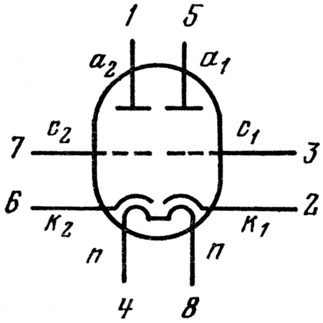
This is the pinout of 6N16B-W (latin characters) As you can
see, the pins are NOT grouped like triode A and triode B - they are
mixed.
Paradoxically this is perfect for SRPP - just look below !!!


Mikrolampizator SRPP inside Arcam CD73 with a Wolfson Dac
A day after I liked so much my anode follower triode lampizator, I had
to try the SRPP - (which I remind - uses one of two triodes as current
source or load resistor or - call it a push pull power supply scenario.
SRPP should be more dynamic, and very immune to power supply
quality issues, yet at a cost of double the number of tubes.
Personally I love it. it combines the good sound of triode with low
output impedance of a cathode buffer.
The test was made on the first CD available around - Arcam CD-73. It
has a great DAC - Wolfson WM8740 so it should play well.
There is not much free space inside the arcam - just enough for
mikrolampizator.
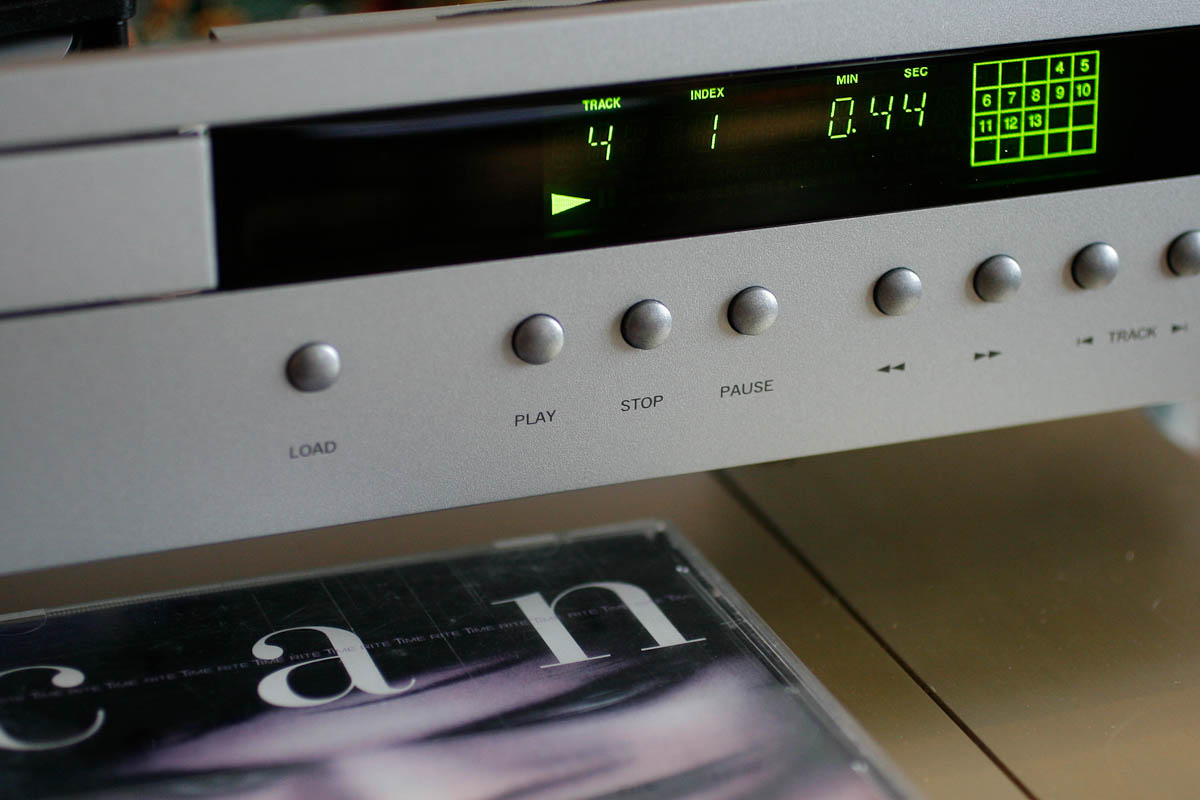
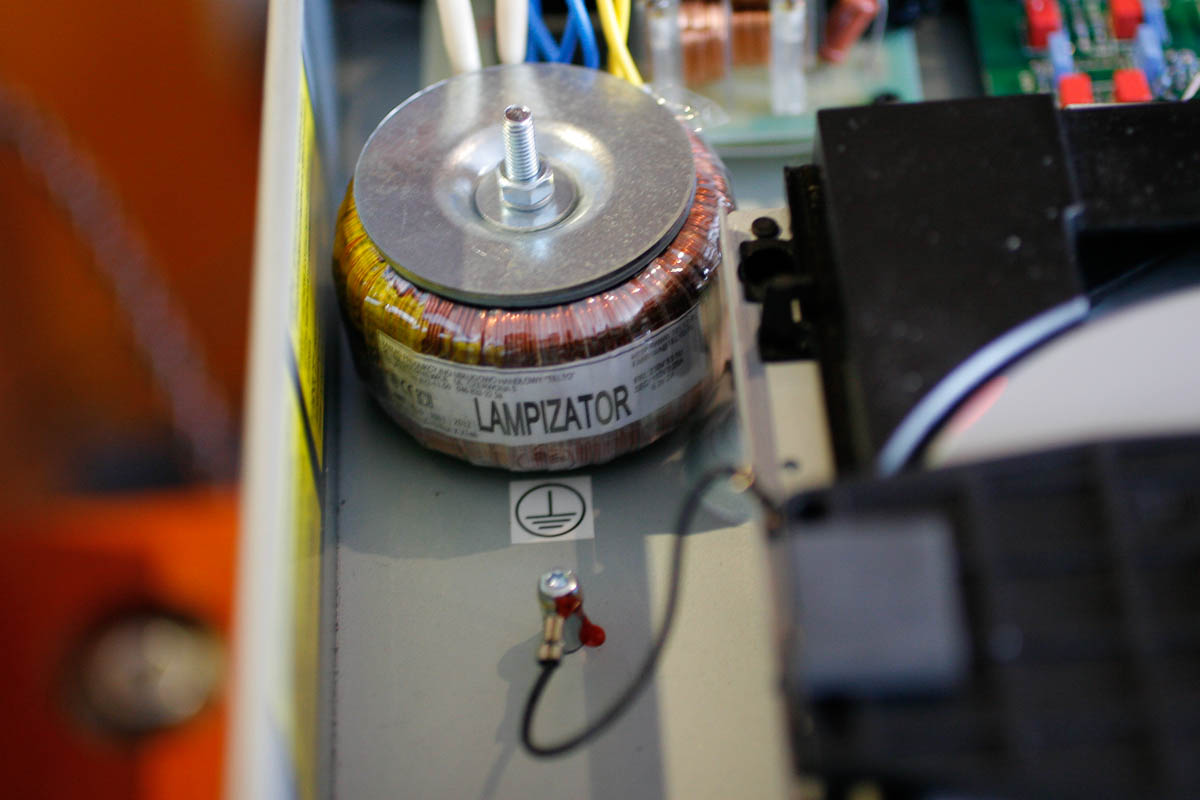
First thing - Lampizator Transformator. It can be small because
the power needs of this tube are so minuscule. Even 3 VA could do the
trick for Triode Anode type, 5VA for the SRPP.
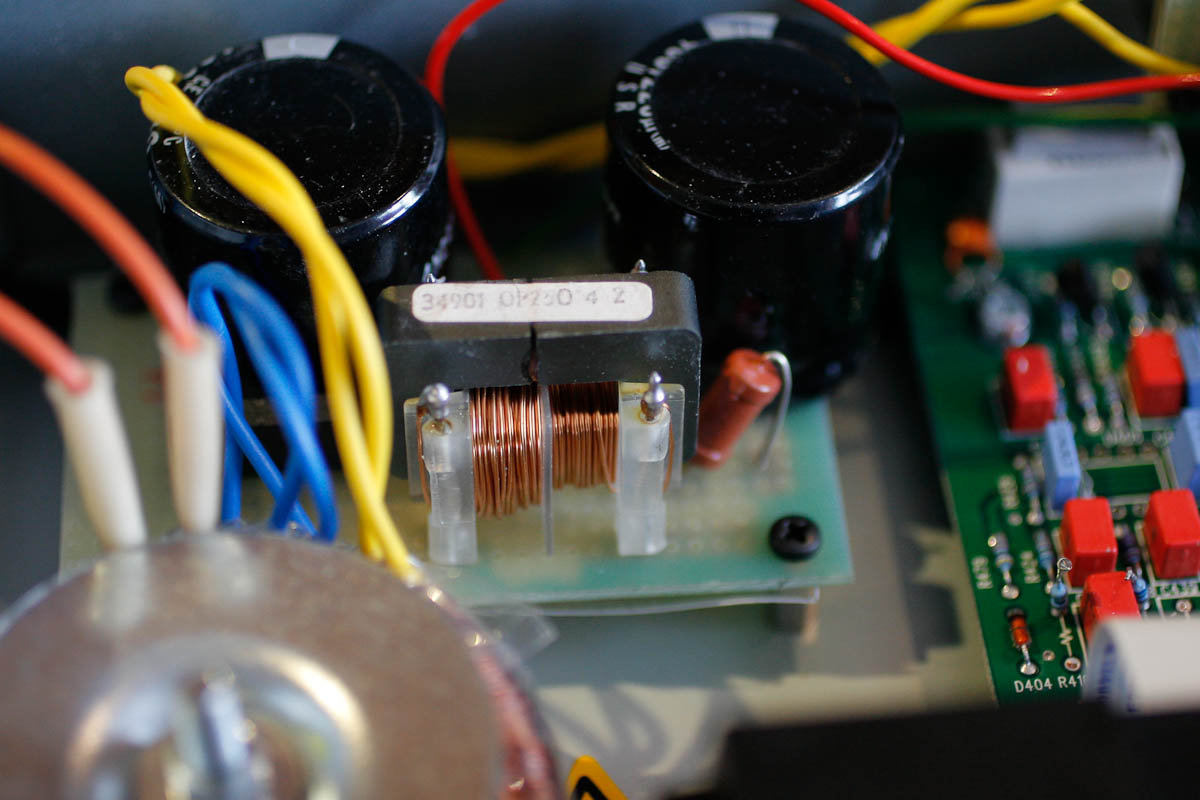
This magnetic "thing" here is a choke - I used a choke between two
large caps to have a perfect flat DC supply.
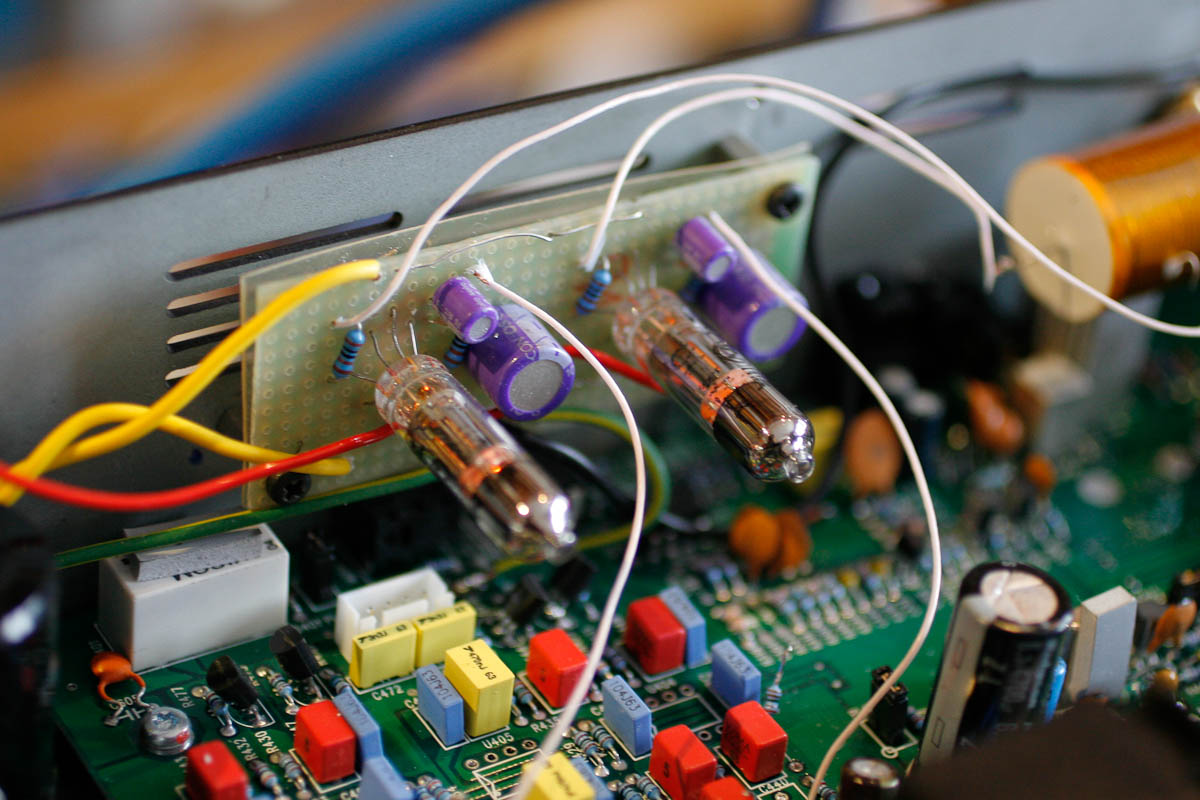
Here it is - a Mikrolampizator SRPP in full glory. Isn't that a cutie ?
The scheme has SRPP, 1 K in both cathodes, 200 V DC supply, oscon in
cathode bypass and oscon as input decoupler.
Mix of this lampizator and Wolfson characteristic sound is fantastic.
Frankly - it exceeded my expectation.
Clearly better than anode variant. And the mids. The mids! The mids to
die for. The voices, female, male, you name it. This is a hell of a
set-up. It can rival anything I ever heard and even if not a winner in
absolute terms, it is damn close.
I found myself a new niche - mikrolampization ! What a hobby.
